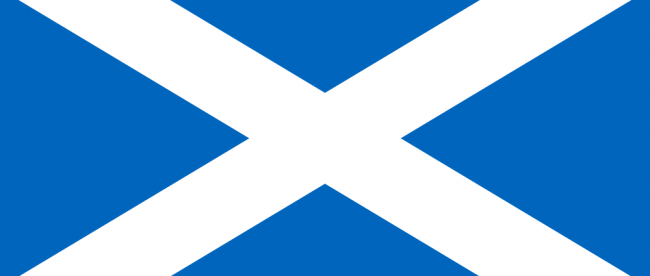How Panama United Great Britain

Scotland and England (and Wales, too, but that’s another story) share the island typically known as Great Britain. Together, with Northern Ireland, the three are now the United Kingdom, making a small but significant part of the world very confusing, with lots of names for what many think are the same place. (That, too, is another story; thankfully, CGP Grey explains all those differences and more in a YouTube video, here, which you should take five minutes to watch.) But before Great Britain could join the United Kingdom, Scotland and England had to unite under one government — the two weren’t always part of the same nation.
For that to happen, Scotland had to first try to take over part of Panama.
In 1603, Scotland and England were still separate nations. When the English queen, Elizabeth I, died that year, that came to an informal halt. The next in line for the English throne was King James VI of Scotland. James kept the Scottish crown and also became King James I of England. His ascension, known as the “Union of the Crowns,” brought the thrones together under one monarch, which was a major step toward unification, but an incomplete one. England and Scotland still had their own parliaments and the two nations remained otherwise politically separate nations for another century.
That century was hardly a boring one in Europe, as many European powers began making claims throughout the Americas. England, Spain, France, the Netherlands, Portugal, and many others were very active in colonizing the other half of the world. Scotland, however, was mostly absent from this period of colonization. In the 1620s, it made a few attempts to set up a colony in what is now Nova Scotia, but those all failed. Scotland set up a somewhat successful colony in parts of New Jersey in 1683, but that was eventually folded into the larger English territory. And penultimately, Scotland had a small settlement in the Carolinas in 1684, but Spain took it over without much difficulty. As the 17th century approached a close, many European nations had a foothold in the Western Hemisphere, but Scotland was almost entirely shut out. This put the Scottish economy in a precarious position, as — unlike its neighbors — they didn’t have the riches from the Americas bolstering them.
So they made one last-ditch effort at it: Panama.
Panama is in a uniquely valuable position geographically — it is the narrowest part of the Americas, and therefore the naturally easiest way to get from the Atlantic to Pacific Oceans without circumnavigating the continents. If you wanted to establish a trade route to Asia, it seemed like a great place to control, so Scotland went for broke — perhaps literally. In 1695, the nation established a trading company and raised £400,000 on its behalf, equal to 20% to 30% of all of Scottish wealth at the time, if not more.
In 1698, the first expedition, with 1,200 people on board, set out from Scotland. Their intended destination was the isthmus adjacent to the Gulf of Darien, and the effort became known as the Darien project. They arrived without much problem, but once they had finished going south literally, everything seemed to go south figuratively. Even though the isthmus was only about 50 or so miles wide, finding a path across it proved difficult — especially if one is hoping to transport goods overland and ultimately to the East. Further, as the Guardian would later note, “the settlers did not plant crops, thinking they could trade their trinkets [that they had brought with them] for food, but the natives were underwhelmed by the offerings. The Scots went hungry and fell sick. Worse, King William forbade the English colony in Jamaica from helping the settlers since he did not want to offend the Spanish, who deemed the interlopers a threat to their own empire.”
Disease and famine set in. By the time another wave of Scottish settlers arrived in 1700, the previous one had failed. Only about 300 of the original colonists survived, and they were in no shape to continue onward. Further, Spanish conquistadors were re-establishing control of the area, and neither the existing nor new Scottish settlers were a match for the better trained Spanish forces. With little exception, those Scots who survived the debacle fled for New England, as Reuters notes.
Back home, Scotland, now in even worse financial shape, needed a way out from under its debts. England, while not seeing Scotland as a threat, didn’t like the idea of having a same-island neighbor which could provide aid to a potential enemy. So the two came to an accord. They’d join, politically, as one nation, linking both their economies and their militaries. In 1707, their respective parliaments adopted the Acts of Union, becoming the Kingdom of Great Britain.
Bonus Fact: Eventually, Scotland’s dreams of connecting the oceans at Panama were realized, but alas, not by Scotland. The Panama Canal now links the Atlantic and the Pacific, and for Panama, it’s a nice little money maker. The Panamanian government charges a toll to ships who wish to go through it, and prices are based on the length of the ship, its cargo, and a few other factors. According to USA Today, as of the summer of 2011, a Norwegian Pearl cruise ship holds the record for the highest toll ever paid, at US$376,000.
From the Archives: Two choices: The Watermelon War, an odd dispute from Panama of the mid-1800s; and Representation without Taxation, how Scotland sometimes gets to vote on matters that only affect English citizens.
Take the Quiz: Select the EU nations with a higher population than Scotland.
Related: The Loch Ness Monster, if it were real, would live in Scotland. It isn’t real, but that’s OK: it still makes for a really awesome soup ladle.
